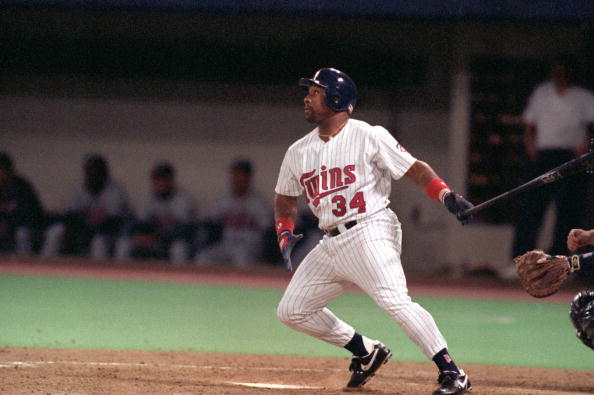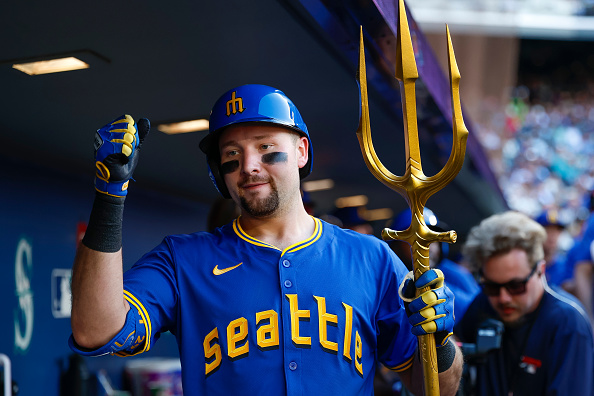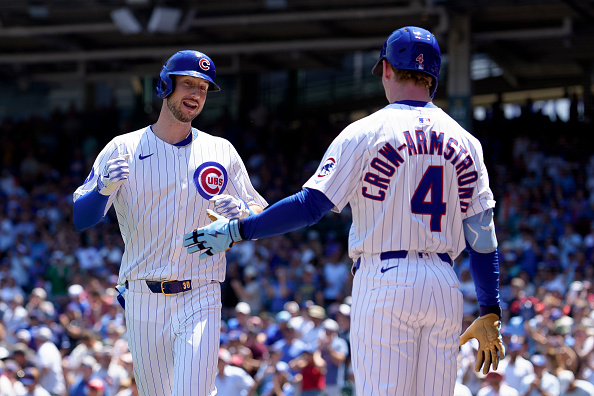The Minnesota Twins started out as the Washington Senators in 1901. Although they had a few good years, it wouldn’t be until 1924 when they finally won their first championship. They would make it back to the World Series in 1925 and 1933 but unfortunately would fall to the Pittsburgh Pirates and New York Giants respectively. The team would have only four winning seasons over the next 27 and moved to Minnesota in 1961.
As the Twins, success came fairly quickly as they won 102 games in 1965 which is still the franchise record. That year they fell to the Los Angeles Dodgers in seven games in the World Series. Minnesota would eventually make it back and win it all in 1987 and 1991. This is the beginning of a series that will look to narrow down a franchise’s great players to a 26-man roster. Therefore, only the stats accumulated for the franchise will be considered. There will be some left off, arguments may ensue, and friendships could be lost. Nevertheless, we move on.
Make sure to check out all of our other All-Time Rosters.
Starting Lineup
Joe Mauer, C
There really isn’t a question about this one. Mauer was born and raised in Minnesota, was drafted first overall in 2001, and played his entire career with the Twins. He had one of the best peaks ever as a catcher. From when he debuted in 2004 to 2013, his last year of being primarily a catcher, Mauer slashed .323/.405/.468 with a .378 wOBA and 135 wRC+ while posting an fWAR of 5.5 per 600 plate appearances.
During that time, he also accumulated some hardware. Mauer won the AL MVP in 2009, earned three Gold Gloves, and was an All-Star six times. He also remains the only catcher to win a batting title in the AL and he did it three times (2006, 2008, 2009). When his time comes in a couple of years, Mauer will get serious consideration for the Hall of Fame as he checks off all of the boxes except, unfortunately, a World Series Ring.
Joe Judge, 1B
Although the name may sound intimidating, Judge was a small first baseman at 5-foot-8 and 155 pounds. The guy could hit though. In his 18 years with the Senators, the lefty slashed .299/.379/.428. He wasn’t much of a power hitter but he did rack up 157 triples and 210 stolen bases for Washington. He was also a key contributor to the World Series victory in 1924 going 10-for-26 with five walks in the Senators’ seven-game victory.
Judge also displayed excellent plate discipline walking a little more than twice as much as he struck out (943-463). Although he is not a household name – most fans now think of the New York Yankees right fielder when they hear the name Judge – the old first baseman was quite the player from the only glory the Senators ever saw.
Rod Carew, 2B
The Panamanian-born second baseman started his career off right, winning the 1967 AL Rookie of the Year award. After a sophomore slump in 1968, Carew led the Twins to an AL West title in 1969 earning the first of seven batting titles. During his 12 years with Minnesota, the lefty was an All-Star each season and finished in the top-10 of MVP voting six times ultimately winning the award in 1977.
That year Carew was batting over .400 as late as July 10. An 8-for-32 slump saw his average drop to .387 and he never got back to the coveted mark. He is still only one of four players to hit above .380 since 1950 and only three players have had more than his 239 hits in a season since 1950. Carew was inducted into the Hall -of Fame on his first ballot in 1991 with over 90 percent of the vote.
Harmon Killebrew, 3B
What Carew was to contact and base hits, Killebrew was to power. After being a part-time player for the first few years of his career, the slugger got into the lineup every day in 1959. He didn’t disappoint blasting 42 home runs and winning the first of six home run titles. Over 13 seasons with the Senators/Twins from 1959-1971, Killebrew hit 504 bombs with a ridiculous .402 wOBA and 151 wRC+.
He also averaged over 100 RBI, walks, and strikeouts in that time. The powerful right-hander finished in the top 5 in MVP voting six times and won the award in 1969. When he retired he was fifth in career homers and currently sits 12th with 573. He was elected to the Hall of Fame in 1984.
Joe Cronin, SS
While Cronin is mostly known for his time with the Boston Red Sox, he fits here as his seven seasons with the Senators were quite good. He had a reputation as an excellent fielder and lived up to that billing. His bat came alive when he got into the everyday lineup in 1929. Over the next six years, Cronin averaged a 5.5 fWAR per 600 PAs and finished second in the MVP voting in 1933. He was inducted into the Hall of Fame in 1956.
Goose Goslin, LF
The New Jersey native had three different stints with the Senators, but he made a mark on the franchise the most from 1922-1929. One of the most impactful offensive players in that time, Goslin had 107 homers and 109 stolen bases to go along with 109 triples. He also was an RBI machine driving in 815 runs in that time.
The lefty slashed .331/.395/.512 during the regular season but in the postseason he truly shined. During the two World Series in 1924 and 1925, Goslin was 19-for-59 with six bombs and 13 RBI in 14 games. He was inducted into the Hall of Fame by the Veteran’s Committee in 1968.
Kirby Puckett, CF
One of the most beloved players in the franchise’s history, Puckett helped bring them their first World Series in 1987, ending a 62-year drought. He played for 12 years with Minnesota finishing top 10 in MVP voting seven times. He was a 10-time All-Star and won six Gold Gloves. The stocky centerfielder also showed up when it counted slashing .309/.361/.536 with five homers in his postseason career while winning the ALCS MVP award in 1991. For a more in-depth look at Kirby check out the article here.
Sam Rice, RF
Rice played 19 of his 20 major league seasons with the Senators even though he didn’t debut until he was 25 years old. Even then, his career didn’t start in earnest until 1919 at 29. From 1919-1932, Rice slashed .326/.377/.434 with 170 triples. He stole 306 bases in that time leading the league with 63 in 1920. He is the franchise leader in hits (2,889), doubles (479), and triple (183). Rice was inducted into the Hall of Fame in 1963 by the Veteran’s Committee.
Kent Hrbek, DH
Although there may be a few other hitters that could be here, Hrbek is one of the most underrated players the Twins ever had. The big lefty played all 14 years of his career in Minnesota and had an excellent 10-year stretch. From 1982-1991 Hrbek slashed .290/.370/.492 with a .377 wOBA and 130 wRC+. He also walked more than he struck out (654-648) which was not a common occurrence for a player who averaged 24 homers a year.
Hrbek was an integral part of Minnesota’s championship clubs. He finished his career second in franchise history in home runs (293) and RBI (1,086). He hung up his cleats in 1994 at 34 years old and the Twins retired his number 14 in 1995.
Starting Rotation
Walter Johnson, RHP
Not only is the Big Train the best pitcher in franchise history, but he is also one of the best ever in the major leagues. When Johnson struck out Roxy Walters on September 10, 1921, he passed Cy Young as the all-time strikeout king. That record would stand for nearly 62 years until Nolan Ryan broke it in 1983. Johnson also holds a record that will likely never be broken – 110 shutouts.
For the decade from 1910-1919, the right-hander from Kansas had a 1.59 ERA. He faced 13,110 batters and allowed only 29 homers while striking out 2,219 of them. He was one of the original five members elected to the Hall of Fame in 1936. There are plenty of ridiculous stats that Johnson boasts. Way too many to list them all here.
Bert Blyleven, RHP
Born in the Netherlands, Blyleven was a third-round pick in 1969 and made it to the majors the following season at 19 years old. He went on to pitch for 22 years in the majors, half of them with the Twins. In his first six years in Minnesota, the right-hander was excellent with a 2.78 ERA and 1,327 strikeouts. He returned to the Twins in 1986 and struck out his 3,000th batter on August 1.
Blyleven was an integral part of Minnesota’s World Series run in 1987, going 3-1 in his four starts in the postseason. All of them were quality starts and he had a 3.45 ERA with a solid 21/5 K/BB rate in 26.1 innings. He was finally elected to the Hall of Fame in 2011 on his 14th try.
Johan Santana, LHP
There are certainly other pitchers who pitched more innings for the franchise than Santana. However, his dominance for a few years is unmatched by any other starter not named Johnson. While only with the Twins for eight years, Santana won two CYAs (it should have been three in a row but he was robbed in 2005). He had a 3.22 ERA and a solid 26.2 strikeout percentage while walking only 6.9 percent.
In 2006, the Venezuelan southpaw won the MLB pitching triple crown with 19 wins, a 2.77 ERA, and 245 strikeouts. Aside from Shane Bieber in 2020 and Dwight Gooden in 1985, no other pitcher since 1970 has accomplished that. For more on Santana check out the article here.
Jim Kaat, LHP
What Santana had in peak performance, Kaat has in longevity. The lefty pitched for 25 years in the majors, 15 of them with the Twins/Senators. In his prime from 1962-1972, the kid from Michigan had a 3.16 ERA, won 169 games, and had 118 complete games. He threw over 230 innings in eight of those 11 years and also won the Gold Glove each season. In 1966 Kaat enjoyed his best season, winning 25 games with a 2.75 ERA while finishing fifth in MVP voting.
Camilo Pascual, RHP
The Cuban right-hander started off coming out of the bullpen for the Senators in 1954. He got acclimated to starting over the next few years and really hit his stride in 1958. Over the next eight years, Pascual posted a 3.08 ERA, won 117 games, and threw a shutout in over 12 percent of his starts. He led the league in strikeouts from 1961-1963 and was a seven-time All-Star. Pascual is fifth on the franchise list for wins (145) and third in strikeouts (1,885).
Bullpen
Joe Nathan, RHP (Closer)
When the Twins acquired Nathan from the San Francisco Giants after the 2003 season, he had already just established himself as a top-notch reliever. He took it to another level over the next six seasons. From 2004-2009, Nathan averaged 69 appearances and 41 saves while maintaining a dominant 1.87 ERA. He also struck out 31.7 percent of the batters he faced. The former shortstop finished top 5 in CYA voting twice and tops the franchise with 260 saves.
Rick Aguilera, RHP
Another reliever the Twins got via trade, Aguilera stepped into Minnesota’s closer role in 1990. Over the next five seasons, the right-hander saved 172 games and posted a 2.89 ERA. He also played a large role on the 1991 World Series team. After saving a career-high 42 games during the regular season, Aguilera saved five more in the playoffs while only allowing one run in 8.1 innings. He sits second on the franchise list in saves with 254.
Jim Perry, RHP
Perry pitched for 10 years in Minnesota and while he was mostly a starter, between 1965-1970, a third of his appearances were out of the bullpen. He logged a 2.76 ERA during that stretch. In 1970 while starting 40 games, Perry won the AL CYA with a 3.04 ERA and 24 wins.
Glen Perkins, LHP
Perkins started his career as a reliever with the Twins in 2006. They would make him a starter for a couple of seasons, but it didn’t go well. Going back to closing games in 2011, Perkins took over for the departed Nathan. The next five years were very good. The lefty from Minnesota saved 120 games with a 2.84 ERA. He also struck out nearly 10 per nine innings. He was also an All-Star from 2013-2015 and is our lefty specialist on this squad.
Firpo Marberry, RHP
Marberry was the first pitcher to be a regular closer. In his nine main years with the Senators, he saved 94 games, leading the majors six times. The right-hander was the first pitcher to record 20 saves in a season with 22 in 1926. That record wouldn’t be broken until Joe Page saved 27 in 1949 for the Yankees. Not only was Marberry a closer, but he was a true swiss army knife as he also started 133 games for Washington in total. He is still the only pitcher in history to start 130+ games and save 90+ for one team.
Al Worthington, RHP
The Alabama native made his way to the Twins toward the end of his career, but he still had some left in the tank. After being purchased from the Cincinnati Reds in June 1964, Worthington had a solid run with Minnesota. From 1964-1968, he posted a 2.54 ERA and saved 71 games including a league-leading 18 in 1968.
Bench
Buddy Myer 2B/SS/3B
Myer is the utility player on this team. His best season was in 1935 when he led the league with a .349 average. He also drove in 100 runs that season. He was a career .303 hitter for the Senators.
Chuck Knoblauch 2B
Knoblauch started his career off right, winning the ROY award in 1991 and a World Series. He finished his Twins career in only seven years but batted .304 with 276 stolen bases which rank fourth in franchise history.
Clyde Milan CF
Milan played his entire 16-year career with Washington. He stole 495 bases in total and led the league twice, stealing a career-high 88 in 1912.
Tony Oliva RF
Oliva had an excellent eight-year stretch from 1964-1971. He won the ROY award, led the league in hits five times, and in batting average three times. The Cuban right fielder also finished in the top 10 of MVP voting five times. His number 6 was retired by the Twins in 1991.
Bob Allison OF
Allison played his entire career with the franchise as well. He hit 20+ eight times, drove in 100+ twice, and finished his career with an .829 OPS.
Torii Hunter, CF
Hunter won fans over with his boyish exuberance on the field and off of it. He was a pretty good player as well. From 2001-2007, the former first-round pick had 178 homers and 112 stolen bases. He also won the Gold Glove in each of those seven seasons.
Honorable Mentions
Brad Radke, RHP
Earl Battey, C
Gary Gaetti, 3B
Mickey Vernon, 1B
Roy Sievers, 1B
Check us out on our socials:
Twitter: @PTSTNews and @TalkPrimeTime
Facebook Page: Prime Time Sports Talk
Join our Facebook Group: Prime Time Sports Talk
Instagram: @ptsportstalk
Follow Johnnie Black on Twitter @jball0202
Main Image Credit: Embed from Getty Images








4 Responses